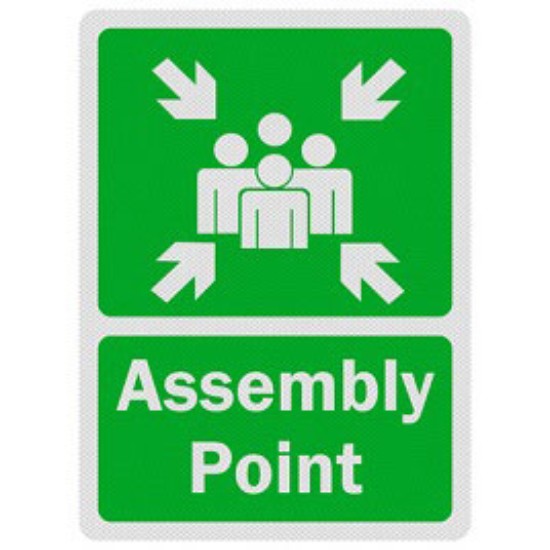
How often and what kinds of safety drills should you perform at work?
While fire drills are the most commonly heard of safety drills, there are several situations which require an action plan, whether that is evacuation or lock-down. Fire, extreme weather such as tornado or earthquake, intruder or active shooter situations all require different emergency responses from facility occupants. Emergency planning and training directly influence the outcome of an emergency situation.
Emergency Action Plans
OSHA standard 29 CFR 1910.38, Employee Emergency Plans and Fire Prevention Plans states that the emergency action plan covers the “designated actions that employers and employees must take to ensure safety from fire and other emergencies.”
Instructions you should outline in your plan include emergency escape procedures and escape route assignments. This ensures that all employees understand the situations in which they should evacuate the building and the route that should be taken by each facility location. You should outline procedures employees should take including shutting down equipment, using fire extinguishers or other safety measures they should attempt.
OSHA requires that employers record emergency action plans in writing unless there are 10 or fewer employees, in which case a verbally communicated plan is sufficient. For more information about developing an emergency action plan or reviewing your emergency action plan, visit our article “Is your fire safety & evacuation plan up to code?” which includes an editable template.
How often should you perform safety drills?
The National Fire Protection Association and OSHA both recommend that employers practice safety drills periodically. This is only a recommendation, as safety drills are only required for schools and residential care facilities. Be sure to check your local fire safety codes, as some contain additional requirements for Fire/Evacuation Drills.
Ohio law requires 10 drills per school year at schools and educational institutions, and 12 drills per year (one conducted on each shift every 3 months) for residential care facilities such as nursing homes. The law also requires that records be maintained and submitted to the State Fire Marshal twice a year showing when drills are performed, including the time, date, weather condition, number of people participating, and total time for evacuation.
Indiana law requires schools to hold one tornado drill and one manmade occurrence disaster drill during each semester. The school’s governing body may require more than the state law, and must require logs of all drills conducted to be filed.
Kentucky law requires schools to hold at least one severe weather drill, one earthquake drill, and one lock-down drill within the first 30 instructional days of each school year and then again in the month of January. No later than November 1 of each school year, the local district superintendent must send verification to the Kentucky Department of Education verifying compliance with these requirements.
View the State Codes for school fire drills in Ohio, Indiana, and Kentucky
You can see the number and types of drills vary greatly. It is important to consider the severe weather conditions that can affect your region when creating your emergency plan. As OSHA recommends, have periodic drills at your workplace. The number of drills you decide is sufficient for your workplace should be influenced by the number of employees you have and the complexity of your emergency evacuation or lock-down plan. The purpose of drills is to ensure everyone knows what to do, and will be able to remember and perform that in the event of an emergency.
Types of Safety Drills
Fire/Evacuation Drill: Fire drills, also called a rapid dismissal drill, is an evacuation drill that should be practiced to ensure an orderly evacuation in the event of a fire which can cause panic and chaos.
Lock-down drill: Lock down drills are used at facilities when an intruder or active shooter is on, or is suspected to be on, the premises.
Tornado Drill/Earthquake Drill: Severe weather drills are very specific to provide safety measures for the current weather conditions. Consider weather conditions for your area and perform drills with your employees to ensure everyone is aware of what to do in the event of a tornado or earthquake, or what the response will be company-wide in the event of a flood, snowstorm, or other inclement weather conditions.
Statewide Drills for National Severe Weather Preparedness Week
Many states will identify a day each calendar year to perform statewide tornado drills as part of the National Severe Weather Preparedness week in March. Tornado sirens are sounded during these drills, so this is an opportunity for your workplace to hold a tornado drill. These statewide drills are an excellent reminder to review your emergency plans, practice fire drills, and update emergency kits.
Sound Your Alarm
If you are performing a fire, lock-down, or severe weather drill at your facility, consider sounding your alarm system. This will allow your employees to become familiar with the sound of your alarm for different emergency events and how to respond to each. If you are going to sound your alarm system, be sure to contact your alarm company in advance to notify them of the test and drill.
Your emergency action plan will vary depending on the size of your company and facility, the number of employees you have, and the type of operations. Small companies might have relatively simple plans that are communicated verbally, involving where the exits are located, what the alarm sounds like, and which emergency services numbers to use. In contrast, employers with multiple sites, greater variability in operations, or large numbers of employees may develop complex, written preparedness plans that cover all types of facilities.
A1 is a leading expert on the latest technology in life safety. To find out more information or to ask a question, click here or call us at 1-800-859-6198.
